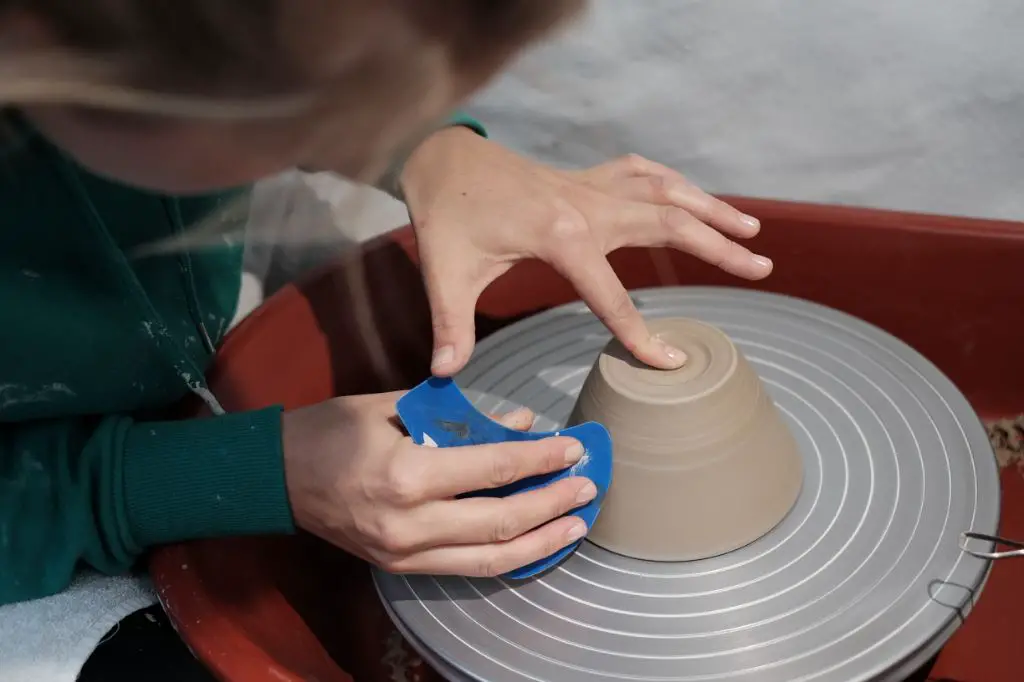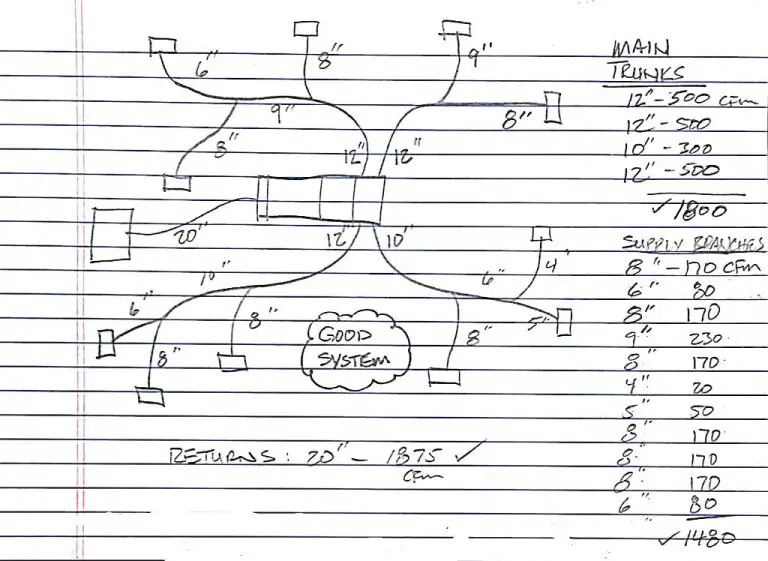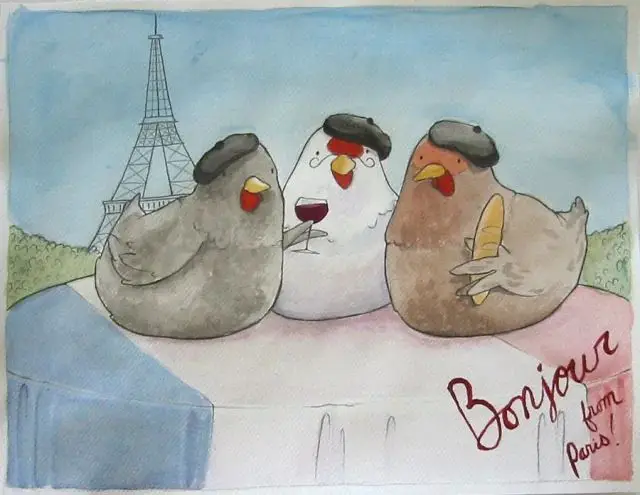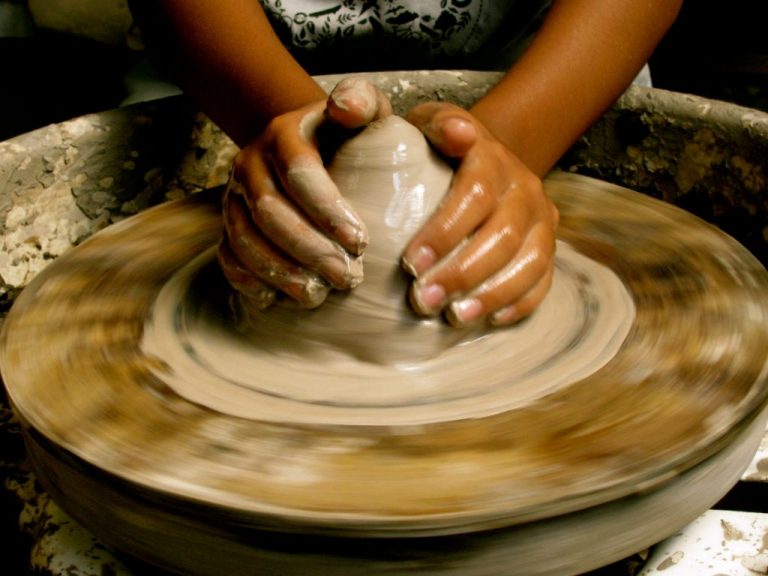What Is A Wheel Used For In Ceramics?
A pottery wheel is a device that allows a potter to shape clay into symmetrical forms quickly and with precision. The wheel head, or rotating disk, turns at speeds typically ranging from 30-300+ RPM powered by a motor or foot pedal. As the clay spins, the potter uses their hands, fingers, and various tools to shape it into the desired form.
The earliest known use of the pottery wheel dates back over 5,000 years to ancient Mesopotamia, around 3500-3000 BCE. From there, the technology spread across cultures including to ancient Egypt, China, and the Mediterranean. Before the invention of the wheel, pottery was made by hand using coiling techniques. The wheel revolutionized ceramic production by enabling much faster, consistent, and elaborate vessel forms.
Shaping Clay
One of the main uses of a pottery wheel is shaping clay into symmetrical forms that would be difficult or impossible to achieve by handbuilding techniques. The centrifugal force of the spinning wheel head allows potters to center and shape amorphous clay into precision vessels with thin, even walls. As the clay spins, potters can use their hands to gently shape the exterior, while forming tools shape the interior cavity.

The pottery wheel’s rotating surface enables potters to refine the symmetry of thrown pieces as they are formed. Subtle adjustments in pressure and tool contact allow expert control over the final contours. While handbuilding relies on adding or subtracting clay, the wheel permits clay to be finessed like a sculptor shapes clay. Fine tuning form and wall thickness is possible throughout the throwing process up until the final stages when the clay stiffens.
Complex shapes like handles, spouts, and embellishments can be attached and refined while the vessel rotates. The momentum of the wheel head allows potters to execute techniques rapidly with fluid motions. Consistency and precision are difficult with handbuilding methods. Thus the wheel is ideal for efficiently achieving symmetry and intricacy.
Source: https://www.thecrucible.org/guides/ceramics/wheel-throwing/
Speed
One of the main advantages of using a wheel for ceramics is the drastic increase in speed compared to handbuilding techniques like pinch pots or coil building. As described by The Crucible, “While wheel throwing can take a bit more time to master than other ceramic techniques, it is much faster for producing multiples of the same form once you get the hang of it.”
Because the momentum of the spinning wheel enables the clay to be quickly shaped into a form, potters can produce pieces at a rate that would be impossible by hand. The velocity that the wheel provides allows efficient repetition for multiples and symmetry in a way no other process can match. This acceleration is essential for potters trying to create large batches of the same item, like mugs or bowls.
While beginners start slowly, wheel throwing ultimately enables much faster production rates once the skill is developed. The speed advantage over handbuilding is one of the main reasons the pottery wheel has become such an indispensable tool for professional ceramic artists and production studios.
Wall Thickness
One of the key benefits of using a wheel when throwing clay is the ability to create pieces with thin, even walls. With the centrifugal force of the spinning wheel, potters can shape and stretch the clay to an incredibly fine thickness that would be difficult or impossible to achieve by handbuilding alone. According to Kemal Manufacturing, uniform wall thickness is essential in molding and shaping, as uneven thickness can lead to defects like premature cooling or material buildup in certain areas.
The speed and motion enabled by the wheel allows experienced ceramic artists to throw vessels and objects with delicately tapered walls, while maintaining an consistency of thickness. This is especially useful for functional ware that requires sturdiness, like cups, vases, and bowls. The wheel’s centripetal force stretches the clay into an ideal thinness not achievable by hand. With practice and skill, potters can create pieces with gossamer-like walls and graceful silhouettes.
New Shapes
One of the main benefits of using a pottery wheel is that it enables potters to create new shapes and forms that would be very difficult to make by hand. The circular rotation of the wheel allows clay to be shaped into symmetrical forms like cylinders, bowls, and vases. While handbuilding techniques like pinch pots, coils, and slabs produce unique organic shapes, the wheel throws clay into precise, standardized forms.
Bowls are one of the most common wheel-thrown forms. The centering process naturally shapes rounded bowls of varying sizes, from small dipping bowls to large serving bowls. The walls can be shaped thinner or thicker for desired functional and aesthetic effects. Wheel throwing also excels at shapes like mugs, vases, bottles, and lidded jars which require symmetry and uniform wall thickness.
Without the pottery wheel, making multiples of the same shape would be very challenging. The wheel allows potters to reproduce the same thrown form efficiently. This allows potters to create matching sets of tableware like plates, bowls, and cups which have a cohesive style. The wheel enables both uniformity and consistency in pottery shapes.
Decoration
One of the key benefits of using a wheel in ceramics is that it creates smooth, even surfaces that are ideal for decoration. The centrifugal force of the spinning wheel evens out any lumps or irregularities in the clay, resulting in a uniform texture after firing.
These smooth surfaces allow for glazes and slips to be applied evenly across the entirety of a ceramic piece. Without the smooth canvas provided by wheel throwing, glazes have a tendency to pool and gather unevenly, ruining the aesthetic effect. According to [1], the potter’s wheel revolutionized glazing techniques and allowed for more intricate and polished looks.
In addition, smooth surfaces lend themselves to more detailed and intricate hand-carved or painted decoration. Artists can incise or paint directly onto the bare clay before bisque firing. The clay takes paint and carvings more readily when it has an even, regular surface to adhere to. Jagged or bumpy surfaces make painting and carving much more unpredictable and difficult to control.
Overall, the potter’s wheel is an indispensable tool for ceramic artists who want to create sleek, polished works decorated with glazes, slips, carvings, or painting. The smooth, regular textures it provides create the ideal foundation for applying decorative techniques.
Scale
The potter’s wheel allows ceramic artists to create much larger pieces than would be possible by handbuilding alone. With the aid of the wheel, potters can throw exceptionally tall vases, wide platters, and intricate vessels on a scale that would be extremely difficult to accomplish using only slabs, coils, and other handbuilding techniques.
For example, in 1976 the American pottery company Haeger Potteries created a record-breaking hand-thrown vase standing over 8 feet tall and weighing 650 pounds. A piece of this size would be impossible to craft by hand alone. The potter’s wheel enables the continuous centering of the clay and the building up of walls far higher than could be supported without the momentum of the spinning wheel.
Not only does the wheel facilitate larger work, but it also allows for more intricate details, carving, and embellishment. The stability provided by the turning wheel makes it easier for potters to etch, carve, and sculpt the clay surface while maintaining an even wall thickness. The wheel expands the scale and complexity possible with clay.
Skill Development
Using a wheel regularly when working with clay helps potters develop important muscle memory and techniques over time. As potters practice using the wheel to center and shape clay, the motions become more natural and smooth. Their hands learn the subtle movements needed to shape and contour the clay into precise forms.
This muscle memory is essential for experienced potters to create uniform pieces and execute their vision consistently. After regular practice on the wheel, potters gain better control over the clay and can shape it into thin, even walls and symmetrical forms. Their hands intuitively perform the techniques needed to manipulate the clay, without conscious thought.
Developing these skills through consistent wheel practice allows potters to make increasingly complex and refined pieces. According to the Wheel of Strengths, as with any craft, regular technique-building creates expertise over time.
Creativity
One of the greatest benefits of throwing on the wheel is how it can free the mind for creative focus. As wheel skills develop through practice, throwing becomes more intuitive and less consciously demanding. This allows the mind to relax, opening mental space for new ideas to flow in. The repetitive motion of centering clay is meditative, bringing a calm, immersed state where creative thoughts can percolate.
Once throwers progress beyond basic cylinders and bowls, their hands gain muscle memory to throw more complex forms. This technical proficiency enables new avenues for creativity, allowing potters to freely experiment with altered shapes, asymmetrical pieces, sculptural attachments, and more. The wheel is an endlessly versatile canvas for creativity.
As throwers master the mechanics of the wheel, it fades into the background, freeing the focus to play with shapes, textures, and decorative techniques. A skilled thrower can let the imagination roam while their hands bring those abstract ideas into tangible form. The wheel allows vision to become reality with ease and flow. Centuries of potters have found the wheel unlocks freedom of expression and channels creativity through their hands.
Conclusion
Wheels have been an integral part of pottery making for centuries, providing an efficient and controlled way to shape clay into a multitude of forms. Summarizing the benefits, the wheel enables consistency in shaping, accelerates production, allows thinner and more delicate pieces, introduces new shapes not possible by hand, decorates surfaces with precision, scales production up or down, and develops new skills and creativity.
Looking to the future, innovations like electric and high-tech wheels will continue to evolve the potter’s wheel, making it even more user-friendly and expanding creative possibilities. As technology progresses, we may see features like computer-aided shaping, customizable programs, and tools to assist novices. However, the fundamental benefit of the wheel will remain its capacity to quickly and ergonomically form clay into an endless diversity of shapes and sizes.





